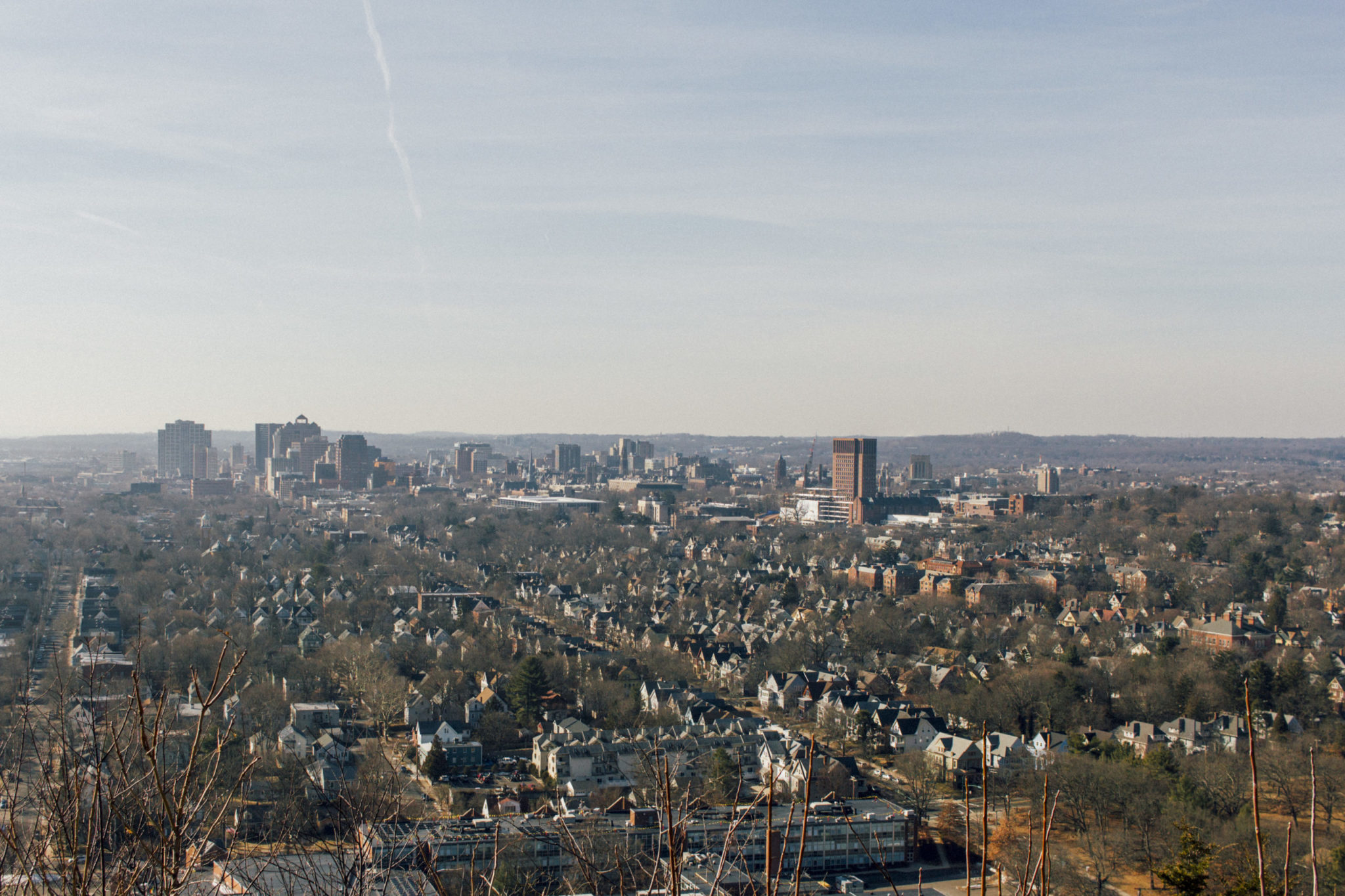Yale students advise state officials on engaging marginalized communities in climate change resilience tactics
Yale School of the Environment and UVM Law School students presented a report on climate change resilience and marginalized communities to a state council.

Yale Daily News
Public participation in Connecticut’s response to the climate crisis is not accessible to members of marginalized communities across the state, according to a new report from a team of researchers that includes two Yale students.
In the report, titled “Community-Centered Climate Resilience in Connecticut,” Trinidad Kechkian ENV ’22 and Nicolás Esguerra GRD ’22 detailed possible methods to increase communication between Connecticut’s government and marginalized communities.
The report provided two main takeaways related to public participation in crafting climate solutions: most people viewed the process as inaccessible or lacking in meaningful involvement. Moreover, the report illustrated the impacts of as well as concerns related to climate change that many members of marginalized communities have.
The report was submitted to the state’s Department of Energy and Environmental Protection, as well as the Governor’s Council on Climate Change. The gathered information is being added into a larger report on climate resilience.
“I became involved because I wanted to take advantage of the opportunity to apply what I had learned in college to a real world project before graduation,” Kechkian said. “Our team felt a great responsibility to do right by the underrepresented communities of Connecticut because we understood that if they were not included in resilience plans, extreme weather events due to climate change could be life-and-death situations. So we thought it was a unique opportunity to bring decision makers and the decision making process closer to communities.”
Over the course of the semester, the team of Yale and UVM Law School students first conducted a literature review to gain a better understanding of climate change’s effects on the state, with an emphasis on how it affects marginalized communities. The group then shifted toward developing focus groups, in which the students would hear directly from these communities across the state.
In response to the challenge of fostering trust between the researchers and members of the marginalized communities, the team made sure to be “very aware” of their position and tried to form more than “genuine extractive relationships,” Kechkian said. With the help of Lee Cruz, the Community Outreach Director at the Community Foundation for Greater New Haven, the students spoke with 30 residents from Hartford, Bridgeport, Willimantic and New Haven — with 43.3 percent of participants from the Elm City. The 30 individuals came from organizations like the Young Women’s Christian Association, Integrated Refugee and Immigrant Services and the Connecticut Coalition for Environmental justice.
“I was brought in specifically because of my background in community organizing and community engagement,” said Cruz. “We talked at great length with the students about different approaches to different communities, and then provided a list of nonprofit 501c3 religious and civic organizations, with the names of specific people that they should reach out to [and] followed up by them reaching out to those organizations and just giving them a heads up.”
The researchers divided the individuals who participated in the study into groups no larger than six and conducted Zoom focus groups, where the students posed questions related to climate change as well as public participation in the process of crafting solutions to climate change.
Based upon the information that the students collected from the focus group, which Kechkian said they published largely without editing to maintain the voice of the participants, the report recommends increasing public outreach through social media, advertisements in papers like the New Haven Independent, on radio stations and at places where large community groups come together. While the report included a summation of the different responses, the authors also included an appendix that included the verbatim responses of all 30 participants.
On specific issues related to climate change, Kechkian said participants in the study spoke about concerns related to energy security, food security, flooding in areas around Hartford and New Haven, clean air and the response to natural calamities like major storms.
“Furthermore, this research confirms that climate impacts are disproportionately affecting BIPOC and low-income communities across Connecticut,” the researchers wrote in the report. “Repeatedly, participants who identified as being part of these communities reported higher instances of power outages, food insecurity, and lack of access to basic resources needed to remain safe during extreme climate events.”
The larger report — which is being compiled by the GC3 and the Equity and Environmental Justice Working Group — will also be consolidated into a planning guide, which community members can reference.
“In the aftermath of the report, we definitely internalized the public participation aspects,” said Alanis Allen ’20, a research analyst in the Office of Climate Planning at DEEP. “We hope to incorporate these especially as we’re moving forward…I think that’s one way we’re kind of adjusting based on the report is that some people are affected in overburdened and underfunded communities that are affected by climate change, and the impacts of climate change, as well as other environmental issues.”
The Governor’s Council on Climate Change was formed in September of 2019 following Lamont’s executive order no. 3 which re-established and expanded the membership and responsibilities of the Governor’s Council on Climate Change.
Correction, Feb. 15: A previous version of this article misspelled Allen’s name and suggested that Esguerra is a student at the Law School; he is actually a masters student at the Jackson Institute of Global Affairs.







